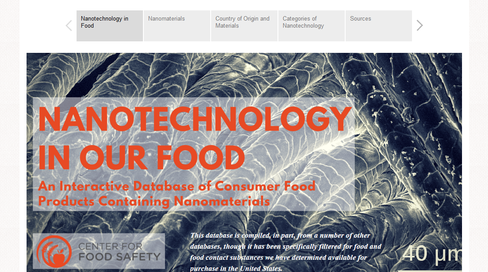Court Strikes Down Federal Approval of New Nanotech-Pesticide
Nano-silver Pesticides Create Different Risks, Federal Agency Failed to Show How Approval Was in the Public Interest, Court Holds
May 30, 2017 (Washington, DC) — Today the U.S. Court of Appeals for the Ninth Circuit concluded that the U.S. Environmental Protection Agency (EPA) unlawfully allowed a novel antimicrobial pesticide product “NSPW-L30SS” (previously “Nanosilva”), made with silver nanoparticles, for use in an unknown number of textiles and plastics. The Court voided EPA’s approval, preventing the product from entering the marketplace and the environment. The opinion is the first of its kind to address EPA’s responsibilities in issuing conditional registrations of new pesticides such as this one.
Sylvia Wu, staff attorney for Center for Food Safety and counsel in the case hailed the decision: “The Court’s decision recognizes the need for EPA to ensure that any pesticide approvals are in the public interest and in so doing protect our communities and environment.”"‹
Nanotechnology is a powerful new platform technology for taking apart and reconstructing nature at the atomic and molecular level. Nanomaterials are rapidly entering the consumer marketplace, including the food industry. Particles at the nano scale – 1/100,000th the width of a human hair – already can be found in items ranging from sandwich bags and cutting boards to paints and sunscreens. The same unique properties that make nanomaterials desirable to industry also raise unique health and environmental risks. The Court’s opinion recognized this, noting that nanosilver may present significantly new risks to human health and the environment due to its smaller particle size. The Opinion pointed out that EPA’s own Scientific Advisory Panel had found that nanomaterials may enter “specific tissues, cell membranes, or inside cells,” and its size means it can also act as a “carrier for other toxic chemicals.”
Jaydee Hanson, policy director at International Center for Technology Assessment (ICTA), CFS’s sister organization and party to the case: “We applaud the Court for recognizing that these novel nanomaterials have different properties and can create novel risks compared to conventional materials. This important decision will improve regulation of pesticides and nanomaterials.”
In its ruling, the Court ruled that EPA had failed to show that “conditional approval” of NSPW-L30SS as a new pesticide “failed to support that [public interest] finding with substantial evidence.” EPA had conditionally registered the controversial pesticide back in 2015. Under the Federal Insecticide, Fungicide, and Rodenticide Act (FIFRA), EPA can only conditionally register new active ingredients such nanosilver particles if EPA determines that the registration is “in the public interest.” In the case of NSPW-L30SS, EPA stated that the registration could “potentially” reduce the amount of silver released into the environment, if all users of conventional silver pesticide products switched to nanosilver and no new users started using nanosilver. The Ninth Circuit rejected these assumptions, holding that merely stating that a pesticide “has the ‘potential’ to be in the public interest” falls short of what the law requires. The Court therefore revoked the conditional registration of the pesticide in whole.
CFS and ICTA have long sought greater oversight of nanomaterials, starting with a 2008 legal petition to EPA and lawsuit that led to more regulatory oversight of the new technology. Nanosilver products are the most incorporated nanomaterial in consumer products, commonly used as a powerful antimicrobial agent. CFS has identified over 400 nanosilver products on the market today. Because there are no labeling requirements for nano-scale products, many more likely have been commercialized without going through registration. In July 2015, shortly after EPA’s approval, CFS and ICTA challenged EPA’s conditional registration of the antimicrobial nanosilver pesticide product. The petition for review was consolidated with a similar challenge filed by the Natural Resources Defense Council.
EPA’s approval of NSPW-L30SS was another example of the agency’s reliance on conditional registration to allow products into the market without sufficient and legally required data. In August, 2013, the U.S. Government Accountability Office issued a report, concluding that “EPA does not have a reliable system to track key information related to conditional registrations, including whether companies have submitted additional data within required timeframes.” Without this court decision, this deficiency would allow conditionally registered pesticides that have not been fully evaluated, such as NSPW-L30SS, to remain on the market for years without EPA’s receipt and review of the data registration is conditioned upon.
The opinion can be found here.
###
Center for Food Safety’s mission is to empower people, support farmers, and protect the earth from the harmful impacts of industrial agriculture. Through groundbreaking legal, scientific, and grassroots action, we protect and promote your right to safe food and the environment. Please join our more than 800,000 consumer and farmer advocates across the country at www.centerforfoodsafety.org. Twitter: @CFSTrueFood, @CFS_Press




